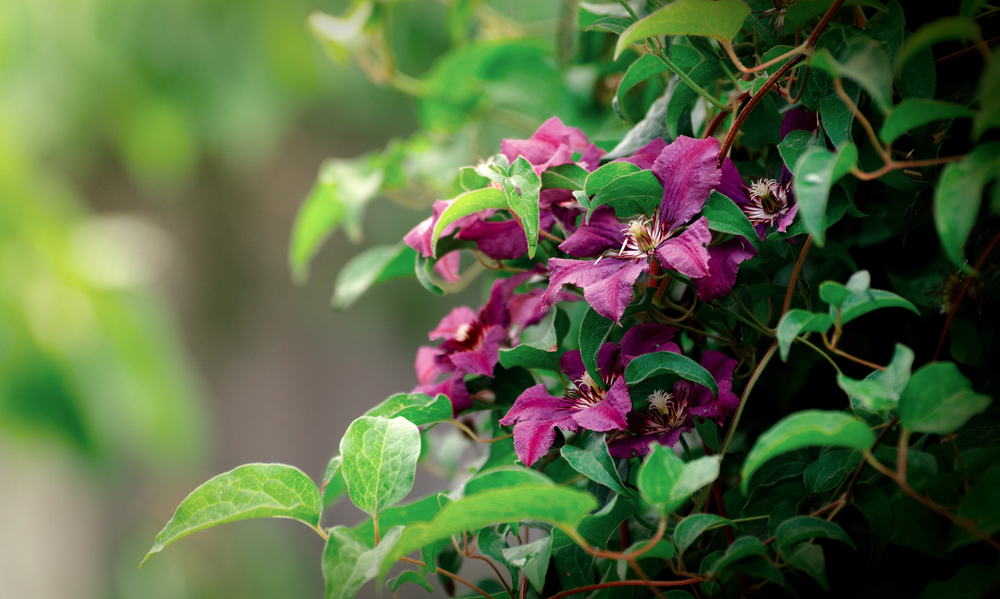Posted by Shannen Godwin on 17th Jun 2021
5 Simple Steps for Growing Clematis

Available in an assortment of stunning shapes, colours and sizes, it’s no wonder why Clematis plants are so popular! Whether you prefer wall trailers or pretty potted plants, there’s a perfect Clematis out there for every garden and they even flower almost all year round.
With spring planting season upon us, it’s the perfect time to get your Clematis plants in the ground. If you’re in need of some gardening tips, follow our essential Clematis planting steps below:
1. Choose the Perfect Spot
Whether you prefer pots on the patio or planting in the border, Clematis plants can do both. Ideal for planting in the springtime, don’t forget that Clematis plants need plenty of space for adequate air flow as well as a rich, well-draining planting area. Dig the hole large enough to accommodate the plant – at least a two foot depth of soil amended with compost prior to planting.
2. Provide Proper Support
As with other climbing plants, the growing end of the vine is on a mission, always searching for something new to grab onto. When a vine can’t find anything to grab, the end stops growing and will die back. Providing the right type of support from the start helps the plant look good and grow well.
Clematis vines can break very easily. Older stems look woody but will crack if they’re bent. Young stems appear to be supple but are actually brittle. So to avoid the heartbreak of your plant flopping, make time in late spring and early summer to correct wandering stems and tie-in top-heavy growth.
3. Pruning is Key
It is tempting to plant your lovely, leggy Clematis and let it get on with it. In fact, all newly planted clematis benefit from being cut back to just above a leaf node no more than 12″ off the ground. 6″ is even better.
This first prune encourages the plant to sprout from the base and gives you a much bushier healthier plant. If you really must, let it flower, but sometime between planting and the following November, cut all clematis back hard.
4. Water well
Until they establish, Clematis are thirsty plants. They should be watered about an inch or so weekly, and more deeply during dry spells.
5. Keep an Eye on Pests
Be on the lookout for common problems that affect Clematis plant health. Clematis wilt can cause vines to suddenly collapse and die after their foliage and stems have blackened. Powdery mildew often affects plants with poor air circulation. Aphids and spider mites can be a problem as well.
Shop our full range of Clematis here.

